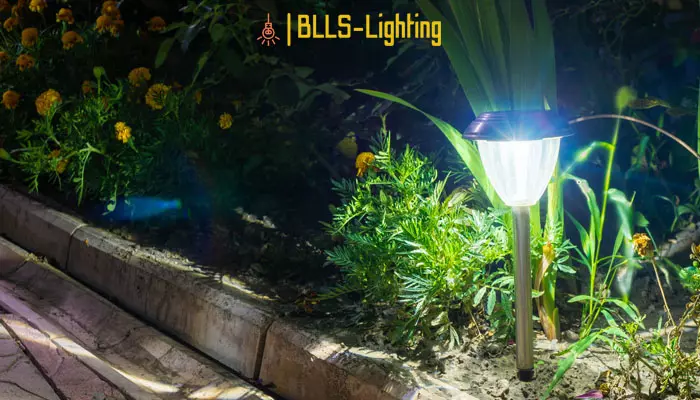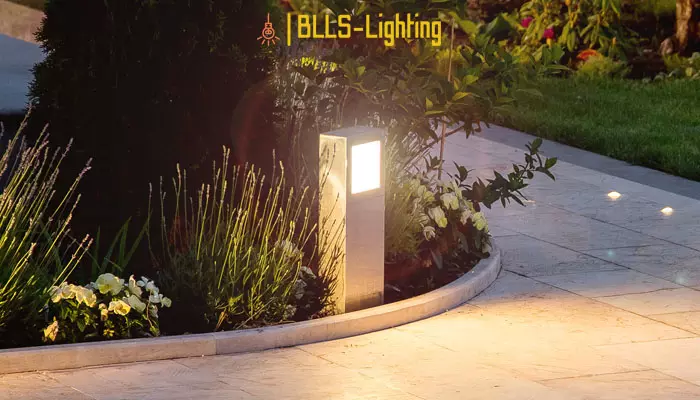Have you ever stepped into your garden at night, expecting the warm glow of your solar lights to guide your way, only to find them mysteriously dim or completely unlit? It’s a frustrating scenario many of us have experienced. We’ve invested in these eco-friendly fixtures, hoping to illuminate our outdoor spaces with renewable energy, yet sometimes, they just don’t seem to cooperate.
So, why are my solar lights not working? This question often arises, leaving homeowners puzzled and seeking answers. Let’s delve into the possible reasons behind this common issue.

Functions and Tasks of Solar Lights
Solar lights are outdoor lighting devices that provide illumination without the need for electrical wiring. They operate by performing the following tasks:
Functions:
- Harvesting Solar Energy: Solar lights utilize a solar panel to convert sunlight into electrical energy.
- Battery Storage: The electrical energy is stored in an internal battery.
- Automatic Activation: Solar lights use a light detector to automatically activate when night falls.
Tasks:
- Charging: During the day, the solar panel charges the battery.
- Powering LED Lights: At night, the stored energy powers LED lights to illuminate the area.
- Duration: The duration of illumination depends on the battery capacity and the efficiency of the solar panel.
Main Issues and Troubleshooting for Solar Lights
Not Getting Enough Sunlight
Cause: Insufficient sunlight impairs the solar panel’s ability to charge the battery, leading to dim or non-functional lights.
Battery Issues
Out of Battery: Depleted or faulty batteries cut off the power supply to the lights, rendering them inoperable.
Sensor Errors
Sensor Malfunction: A malfunctioning light sensor may fail to detect changes in light levels, leading to improper activation or deactivation of the lights.
Dust and Dirt Buildup
Dust and Dirt Accumulation: Over time, dust and dirt can gather on solar panels, obstructing sunlight and hindering energy absorption.
Water Damage
Water Buildup in Panels: Water infiltration can damage internal wiring and circuitry, affecting the operation of the lights.
External Light Sources
Proximity to Light Sources: External light sources may confuse the light sensor, preventing the lights from activating as intended.
LED Issues
Malfunctioning LED Bulbs: If LED bulbs are defective or non-replaceable, the entire light fixture might need to be replaced.
Pull Tab Oversight
Pull Tab Removal: Neglecting to remove the pull tab prevents the activation of the solar battery and the subsequent functioning of the lights.
Switch and Microprocessor Failures
Switch and Microprocessor Malfunction: Faulty switches or microprocessors can disrupt the automatic on-off mechanism, rendering the lights inoperable.
Solar Panel Cables
Loose or Disconnected Cables: Compromised cables disrupt the flow of energy from the solar panel to the battery and the lights.
Motion Detector Issues
Improper PIR Settings: Incorrectly adjusted PIR motion detectors may fail to detect movement, preventing the lights from activating in response to motion.

How to Fix Solar Lights and Get Them Working Again
Solar Light Components and Issues
Solar lights rely on several key components:
- Solar panel: Converts sunlight into electricity.
- Battery: Stores electricity for night-time use.
- LED bulbs: Emit light.
- Wiring: Conducts electricity between components.
- Controller: Manages energy flow and regulates light activation.
Usage and Maintenance
Proper usage and maintenance are crucial for optimal solar light performance:
- Overcharging: Can damage batteries.
- Undercharging: Reduces battery life.
- Battery discharge: Natural process that reduces battery capacity over time.
- Cleaning: Regular cleaning prevents dirt and grime accumulation.
- Regular maintenance: Extends light lifespan.
Specific Causes and Troubleshooting
Battery failure:
- Symptom: Solar lights not charging or holding charge.
- Solution: Replace batteries with new ones.
LED failure:
- Symptom: Solar lights not turning on or not bright enough.
- Solution: Replace faulty LED bulbs.
Solar panel damage:
- Symptom: Solar lights not working after rain or physical damage.
- Solution: Inspect panel for cracks or broken cells. Replace if necessary.
Wiring issues:
- Symptom: Intermittent lighting or no power at all.
- Solution: Inspect and repair loose or damaged wires.
Controller malfunction:
- Symptom: Irregular light behavior or failure to activate.
- Solution: Reset or replace controller if needed.
Water infiltration:
- Symptom: Solar lights not working after rain.
- Solution: Dry unit thoroughly and check for internal damage.
Corrosion:
- Symptom: Rust or discoloration on components.
- Solution: Clean affected areas and apply anti-corrosion spray.
Troubleshoot and Repair
- Battery testing: Use a voltmeter to check battery voltage.
- Solar panel testing: Use a multimeter to measure panel output.
- LED testing: Replace suspect LED bulbs and check for functionality.
- Wiring inspection: Visually inspect wires for damage or loose connections.
- Cleaning and maintenance: Clean components regularly and check for dirt or debris.
- Replacement of faulty components: Replace damaged or malfunctioning parts as needed.

How to Reset Solar Lights
To reset solar lights and resolve minor issues:
1. Power Off the Solar Lights:
- Turn off the lights using the switch.
- This allows the internal circuitry to reset.
2. Keep Lights Off:
- Leave the lights off for a few seconds to a minute.
- This ensures a complete reset.
3. Recharge the Solar Lights:
- Place the solar lights in direct sunlight.
- Charge them for several hours to maximize battery capacity.
4. Power On the Lights:
- After charging, turn the lights back on.
- This should resolve common issues, such as not turning on or being dim.
FAQ:
Why are solar lights flashing on and off?
Flashing solar lights commonly signal that the LED light is not receiving sufficient electricity. This issue could stem from loose electrical wiring in your light or a nearly depleted solar battery, causing the lights to operate below their optimal functionality. Identifying and addressing these electrical issues is crucial to ensuring that your solar lights work as intended.
How long does a solar light last?
The batteries in a solar light are typically the initial components to wear out, and regrettably, the rechargeable batteries commonly found in solar lights usually have a lifespan of one to two years. The good news is that these batteries are readily replaceable.
By acquiring new batteries with the same size and capacity to replace the old ones, the remaining components of your solar light can theoretically endure for 20 to 30 years. Regularly replacing the batteries is a simple yet effective way to extend the overall longevity of your solar lights.
Can my solar lights be used indoors?
Certainly, you can charge your solar light indoors if you have a location that receives sufficient sunlight. It’s important to note that solar panels operate with reduced efficiency indoors, particularly when they receive light through a glass window.
While it is possible to charge your solar light indoors, it’s advisable to position it in an area that allows for the maximum intake of natural sunlight to optimize the charging process.
Can my solar light catch fire?
Although uncommon, there have been instances of solar lights overheating and catching fire. Typically, these incidents result from solar batteries overheating and coming into contact with flammable materials. To minimize the risk, it’s essential to use high-quality batteries equipped with reliable safety controls that automatically shut off the battery before it reaches dangerous temperatures. Additionally, position your solar light away from any materials that are prone to catching fire. Prioritizing the use of safe batteries and proper placement contributes to the overall safety of your solar lights.
In conclusion, troubleshooting solar lights that are not working can be a manageable task once you understand the potential reasons behind their malfunction. By examining factors such as battery condition, sunlight exposure, and component integrity, you can often pinpoint the issue and take appropriate action to restore functionality.
Whether it’s replacing worn-out batteries, repositioning lights for better sunlight reception, or repairing damaged components, addressing these issues promptly can ensure that your solar lights continue to brighten your outdoor spaces with eco-friendly illumination. Remember, a little maintenance and attention can go a long way in maximizing the efficiency and longevity of your solar lighting setup.
While solar lights offer numerous benefits, it’s essential to acknowledge that they’re not without their limitations. For those considering alternative lighting solutions, it’s worth exploring the drawbacks of solar tube lighting. So, what are the drawbacks to solar tube lighting? Let’s examine some potential challenges associated with this innovative lighting technology.

